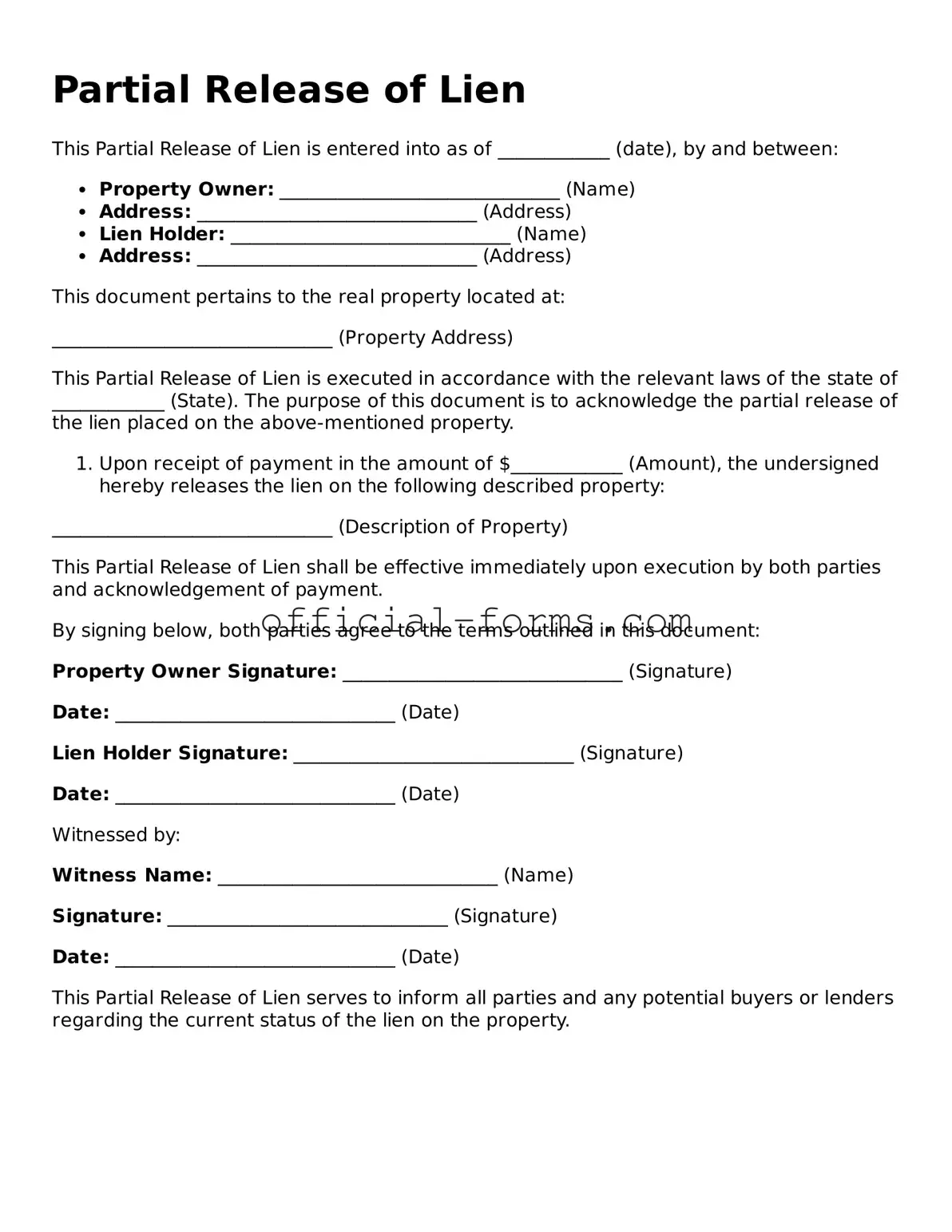Filling out a Partial Release of Lien form can be a straightforward process, but there are common mistakes that individuals often make, which can lead to complications down the line. One of the most frequent errors is failing to provide complete information. Each section of the form must be filled out accurately. Omitting details, such as the property address or the names of the parties involved, can render the document invalid.
Another common mistake involves incorrect dates. It is crucial to ensure that all dates entered on the form are accurate and reflect the correct timeline of events. An incorrect date can create confusion about when the lien was released, potentially leading to disputes or misunderstandings between parties.
In addition to providing accurate information, individuals often neglect to include the necessary signatures. A Partial Release of Lien form typically requires signatures from both the lien claimant and the property owner. Without these signatures, the document lacks the necessary legal authority to be effective.
Moreover, some people fail to understand the implications of the form. A Partial Release of Lien does not eliminate the entire lien; it only releases a portion of it. Failing to grasp this concept can lead to misunderstandings about the remaining obligations. It is essential to clearly understand what is being released and what remains.
Additionally, individuals sometimes use outdated forms. Legal documents can change over time, and using an outdated version of the Partial Release of Lien form can lead to issues. Always ensure that the most current version is being used to avoid potential legal complications.
Another mistake is not keeping a copy of the completed form. After submitting the Partial Release of Lien, it is wise to retain a copy for personal records. This document may be needed for future reference or in case of any disputes that arise later.
Furthermore, people often overlook the need for notarization. Depending on the jurisdiction, some forms may require notarization to be legally binding. Failing to have the document notarized can lead to challenges in enforcing the release.
Lastly, individuals may not follow up on the filing of the form. After submitting the Partial Release of Lien, it is important to confirm that the document has been properly recorded with the appropriate local authority. Neglecting this step can result in the release not being recognized, leaving the lien in place.
By being aware of these common mistakes, individuals can navigate the process of completing a Partial Release of Lien form more effectively. Attention to detail and understanding the requirements can help ensure that the document serves its intended purpose without complications.
